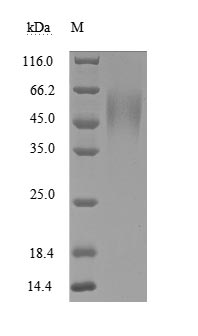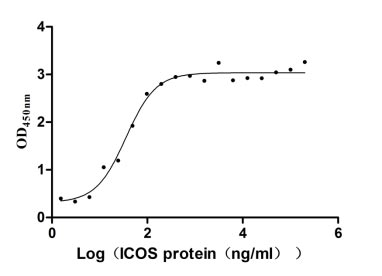Human ICOS ligand (ICOSLG) amino acid Asp19-Ser258, with an N-terminal linker, and a C-terminal 6xHis-tag, was expressed in mammalian cells. The product is the recombinant human ICOSLG protein. It is an active protein whose bioactivity has been measured by its binding ability with the human ICOS receptor in a functional ELISA. The EC50 of human ICOSLG protein is 29.04-43.59 ng/ml. The purity of this ICOSLG protein reaches up to 95% determined by SDS-PAGE. It has an apparent molecular mass of 40 kDa on SDS-PAGE while its predicted mass is 28.9 kDa. Glycosylation causes this result. Its endotoxin level is less than 1.0 EU/ug measured by the LAL method. And it is in stock now.
ICOSLG is the ligand for inducible costimulatory molecule (ICOS). ICOS-ICOSLG interaction delivers the co-stimulatory signals that facilitate the activation and differential of T cells. Dysregulation of the ICOS-ICOSLG pathway has been associated with autoimmune diseases and cancer and is a potential immune checkpoint blockade.








